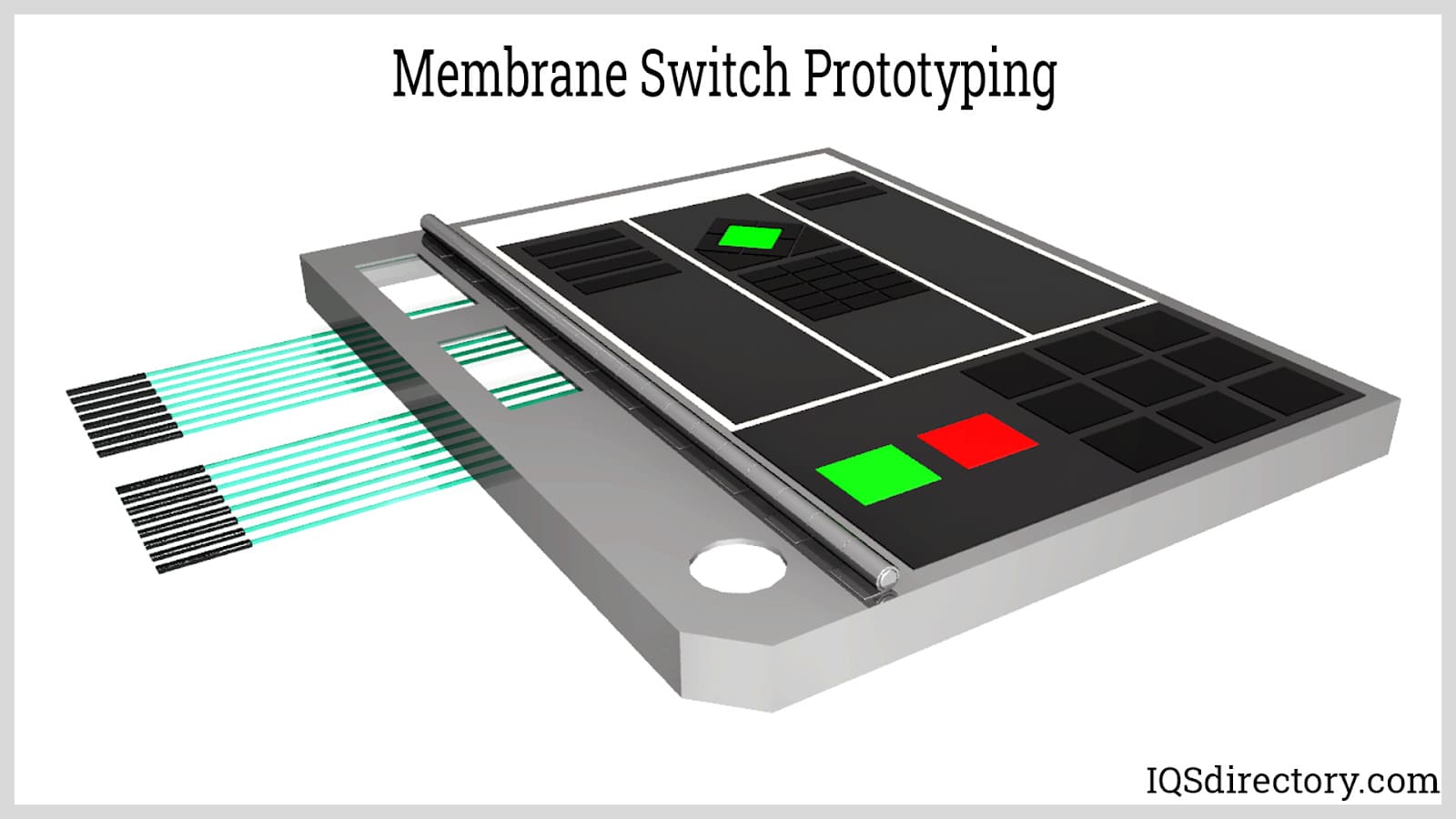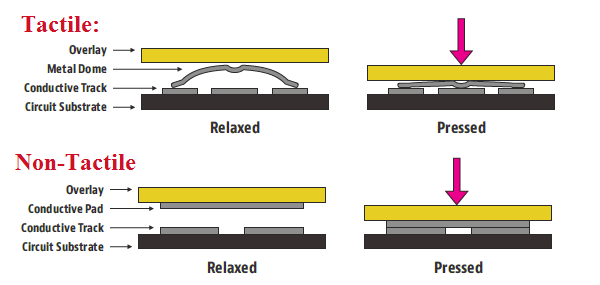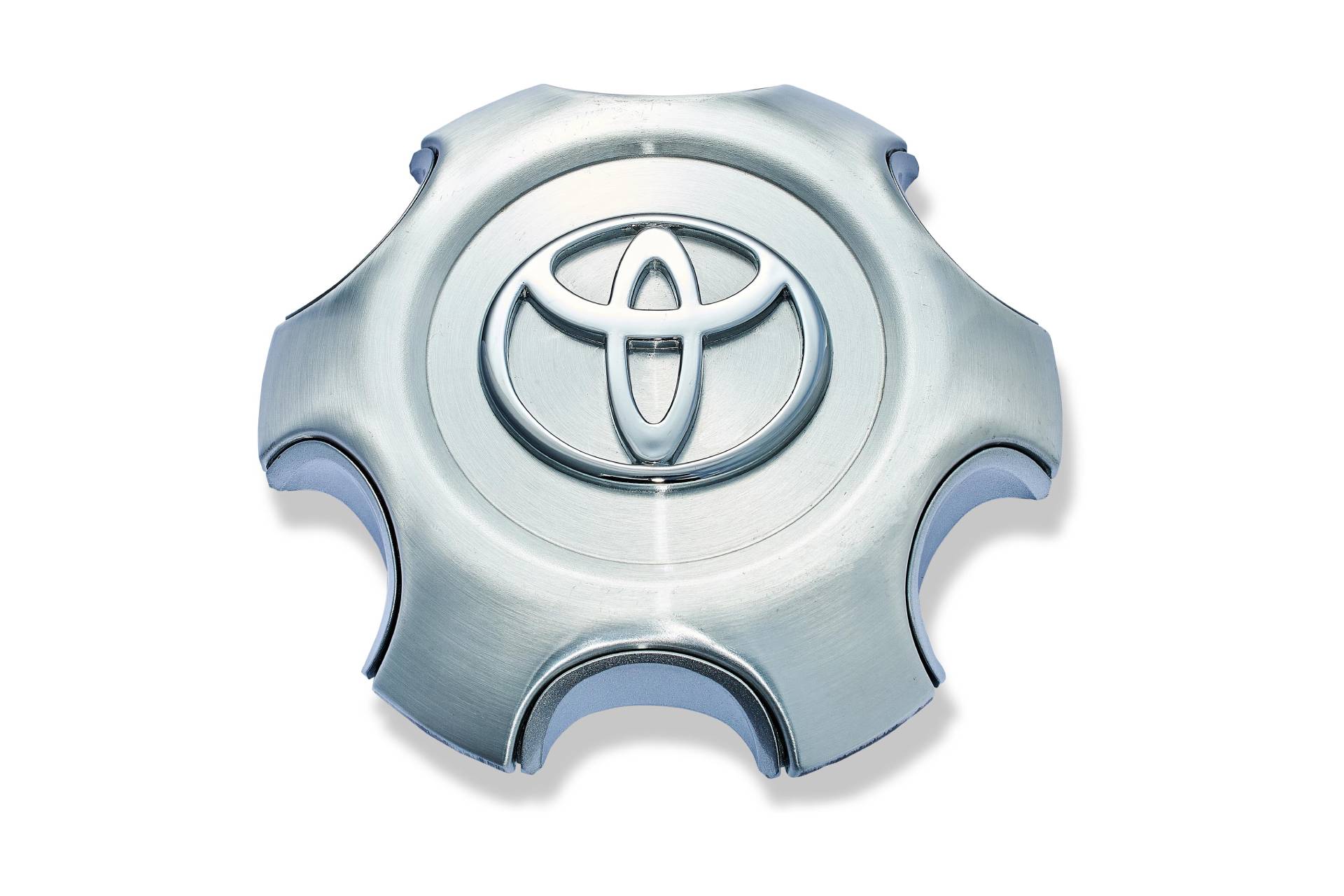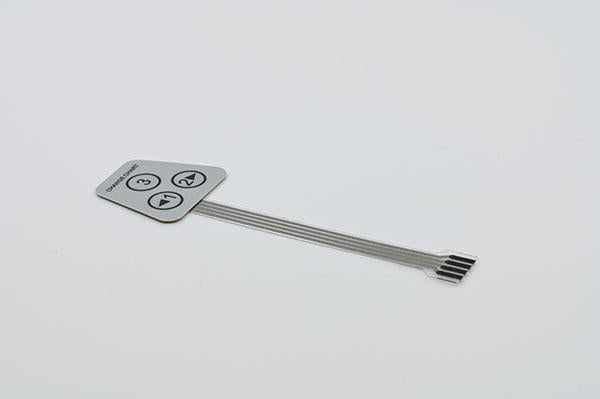How Membrane Switches Are Revolutionizing User Interface Design
How Membrane Switches Are Revolutionizing User Interface Design
Blog Article
Comprehending the Relevance of Membrane Switches in Customer User Interfaces
Membrane buttons are indispensable parts in the layout of reliable interface, promoting not just capability yet additionally boosting visual charm and individual interaction. Their distinct features, such as resistance to adjustable styles and environmental variables, make them ideal for a varied range of applications across numerous markets. As we check out the future patterns and various benefits related to Membrane modern technology, it ends up being clear that these switches are greater than simply elements; they stand for a merging of development and practicality. The effects of this innovation on user experience deserve analyzing further.
What Are Membrane Switches?

The spacer layer, which consists of adhesive residential properties, enables the separation of the circuit layer from the overlay, ensuring that the button stays in a non-activated state until pushed. When pressure is put on the overlay, it presses the spacer layer, connecting the gap and finishing the circuit in the underlying layer. This style not just minimizes the physical space needed for standard mechanical switches yet likewise enhances the durability of the tool, as Membrane buttons are typically resistant to dirt, moisture, and various other environmental variables.
Frequently found in applications varying from consumer electronic devices to medical tools, Membrane buttons are important to contemporary technology, giving a effective and user-friendly interface that straightens with modern design needs.
Advantages of Membrane Switches
While countless switch modern technologies exist, Membrane Switches deal distinct advantages that make them specifically desirable in different applications. Among the primary benefits of Membrane buttons is their compact style, which permits for space-saving applications in tools where property is limited. Their slim account not just enhances aesthetic allure but likewise promotes lightweight building.
An additional substantial benefit is their resistance to environmental elements. Membrane buttons are typically sealed versus dampness, dust, and pollutants, making them excellent for usage popular atmospheres, such as clinical tools and commercial tools. This resilience prolongs the lifespan of the switch, minimizing maintenance prices and enhancing reliability.
In addition, Membrane switches can be personalized to meet specific style demands, integrating special graphics and shades that improve individual interaction. Their responsive feedback alternatives can additionally be tailored to give a gratifying customer experience. Additionally, Membrane buttons are cost-efficient, specifically in high-volume applications, as they can be generated efficiently.
Applications in Numerous Industries

In the consumer electronics sector, Membrane buttons are widespread in gadgets such as microwaves, cleaning devices, and remote controls. Their tactile comments and visual options boost user experience while giving a smooth, contemporary appearance. Furthermore, auto manufacturers use Membrane buttons in dashboard controls and infotainment systems, where area is restricted, and customer interaction is vital.
Additionally, the industrial field leverages Membrane switches in control panels for equipment and tools, permitting for intuitive operation in usually rough settings. Their resistance to chemicals and dampness makes certain long life and integrity in these applications. Generally, the Read Full Report versatility of Membrane Switches adds considerably to their extensive use, making them crucial in various technological domain names.
Design Considerations for Membrane Switches

When developing Membrane switches, a number of key considerations should be thought about to make sure optimal functionality and individual experience. To start with, the option of materials is important; picking long lasting, high-quality substratums can improve the button's long life and resistance to environmental variables such as wetness and temperature level fluctuations.
Second of all, the layout of the visuals overlay should prioritize quality and ease of usage. Icons and text need to be clear, and the layout must promote intuitive communication (membrane switches). In addition, tactile responses is essential; incorporating a tactile dome or various other mechanisms can enhance the individual experience by supplying physical confirmation of activation
One more important variable is the button's electrical efficiency. Designers have to ensure that the conductive traces are properly designed to decrease resistance and stay clear of signal disturbance. This includes analyzing the required actuation pressure and guaranteeing compatibility with the digital components they will user interface with.

Future Patterns in Membrane Innovation
As innovation continues to development, Membrane buttons are positioned to evolve dramatically, driven by technologies in products and producing techniques. One arising fad is the unification of advanced products, such as flexible substratums and conductive inks, which enhance resilience and reduce the overall weight of Membrane buttons. These products not just improve the tactile response but also permit the style of switches that can stand up to harsher environmental problems.
Moreover, the assimilation of touch-sensitive technologies is transforming standard Membrane Switches right into even more interactive individual interfaces. Capacitive touch sensing units installed within Membrane switch panels can supply an extra receptive and instinctive customer experience, aligning with the growing demand for streamlined, modern-day layouts in consumer electronic devices.
In addition, advancements in printing techniques, such as digital and 3D printing, make it possible for rapid prototyping and customization of Membrane switches. This adaptability allows producers to react more swiftly to market needs and consumer preferences.
Last but not least, sustainability is ending up being a significant emphasis, with makers checking out eco-friendly materials and processes. As these trends unravel, the future of Membrane modern technology promises boosted performance, aesthetic allure, and ecological duty, solidifying their function in innovative user interfaces throughout different industries.
Verdict
To conclude, Membrane Switches stand for an essential element in the layout of individual interfaces, integrating capability with aesthetic versatility. Their benefits, consisting of durability and resistance to ecological factors, make them appropriate for varied applications throughout various sectors. Thoughtful style considerations enhance individual interaction and experience. As innovations in innovation continue, the development of Membrane buttons is anticipated to more refine interface, driving technology and improving use in a progressively intricate technical landscape.
Membrane switches are integral components in the design of effective customer interfaces, promoting not just performance however also enhancing visual allure and individual interaction.Membrane Switches serve as an important component in numerous individual interfaces, helping with a seamless communication in between individuals and electronic tools.While many switch technologies exist, Membrane Switches deal unique advantages that make them specifically desirable in various applications.In visit this page addition, Membrane buttons can be personalized to meet details style requirements, including special graphics and colors that improve user communication.In conclusion, Membrane Switches stand for an important part in the design of customer interfaces, integrating capability with aesthetic adaptability.
Report this page